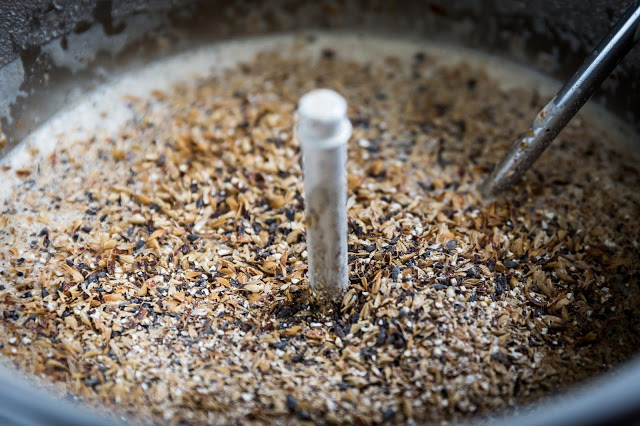As brewers we know that the purpose of the mash is to target specific enzymes in order to break down the starches present into sugars for the yeast to ferment. But what is an enzyme? And how does it break down starch? And which enzymes should we be targeting?
Well, an enzyme is simply a protein with a special, specific structure which is capable of accelerating the breakdown of different substrates (a molecule on which enzymes can act). Enzymes speed up chemical reactions without undergoing any permanent chemical change themselves, meaning an enzyme is not ‘used up’ in the chemical reaction.
Clear as mud right?
As mentioned, every enzyme has a special, specific structure meaning the structure of the substrate has to match in order to bind and for the enzyme to work on the substrate, like jigsaw pieces. This is why we target different enzymes in the mash, each enzyme will only work on a specific substrate.
When an enzyme successfully binds to the substrate they lower the amount of energy required for a chemical reaction, enabling the reaction to occur faster and at a lower temperature.
As well as proteins, many enzymes require co-factors in order to work. These co-factors can include manganese, copper, zinc, potassium and sodium which is why it is important that these ions be present in the mash.
 |
| Enzymes working during the mash |
So basically, enzymes are proteins which bind to starch molecules in the mash and speed up the chemical reactions required to break this down to sugar.
Interestingly, this increased speed of enzyme-catalyzed reactions increases as the temperature increases but only up to a certain point. There is a ‘maximum’ temperature for these reactions and if you go above this temperature it will have an adverse affect on many enzymes. Temperature changes as small as 1-2°C may change the results as much as 10 – 20% which is why we focus so much on the temperature steps of the mash and maintaining a consistent temperature throughout.
All organisms produce all the enzymes required to break down their component molecules. This means barley is naturally able to produce all the enzymes required to break down starch, beta glucan, lipids and protein.
There are three main enzyme reactions that brewers target in the mash process. The first is the hydrolysis of starch. Hydrolysis simply means ‘the chemical breakdown of a compound due to a reaction with water’. In brewing we want to break down starch to sugars, using beta amylase and alpha amylase enzymes. Before the enzymes can work on the starches though, you must gelatinise the starch granules meaning the mash must be at an optimal temperature for gelatinisation to occur and for alpha amylase or beta amylase to work without becoming denatured.
Second is beta-glucan breakdown. Beta glucan makes up over 75% of the cell wall of barley and although a lot is water soluble, some is bound to the cell wall and if it is not broken down sufficiently this will block access to the protein and starch meaning your extract efficiency will be dramatically reduced.
Lastly we are looking to achieve the hydrolysis of proteins and polypeptides. Proteins are solubilised during the mash and will precipitate out during the boil. The enzymes Endoprotease and Exopeptidase are responsible for breaking down the proteins, with exopeptidase responsible for producing amino acids which are vital for proper yeast growth and health during fermentation.
So there is a quick summary of what enzymes are and what their purpose is in the mash. If you have any questions let us know at [email protected] or in the comments section below!
